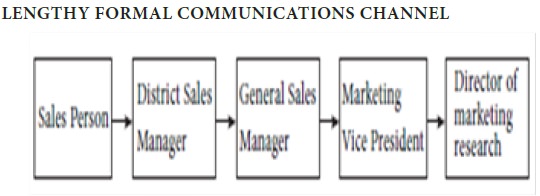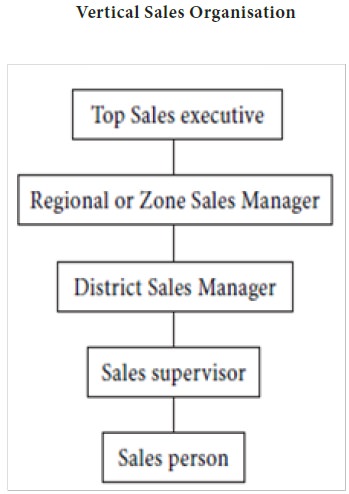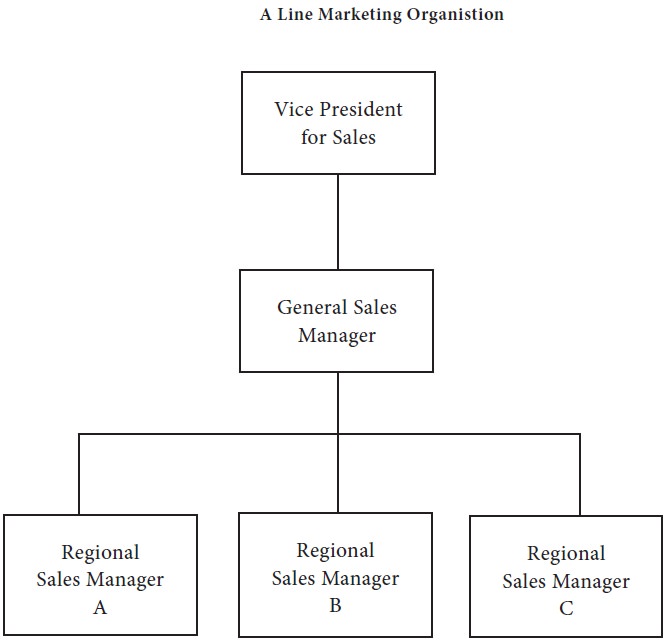MARKETING MANAGEMENT - PROMOTION DECISION
Developing a Sales Organisation - Sales Force Decision
Posted On :
Developing a Sales organistion structure is not an easy task. The key to organizational design are consistency and coherence. The importance is highlighted as:
Developing a Sales Organisation
Developing a Sales organistion structure is not an easy task. The key to organizational design are consistency and coherence. The importance is highlighted as:
“Spans of control, degrees of job enlargement, forms of decentralization, planning systems and matrix structure should not be picked and chosen at random. Rather, they should be selected according to internally consistent groupings, and these groupings should be consistent with the situation of the organization – its age and size, the conditions of the industry in which it operates, and its production technology”.
This means that sales managers must recognize, and then deal with, some basic organizational issues when developing a sales organization. The five major issues are :
Every organization has a formal organisation and an informal organisation. The formal organisation is the creation of management, whereas the informal organisation is often developed from the social organisation. Also called the grapevine, the informal organization is basically a communication pattern that emerges to facilitate the operation of the formal organisation.
Consider the case of a field salesperson who is responsible for collecting certain competitive information, such as prices and trade discounts. If this information were forwarded through the formal organization, the data would be outdated and would be useless to management. The informal communication system, however, allows the information to be transmitted directly to the director of marketing research. The figure on page 490 shows an informal communication pattern that might exist in a marketing organization.
The figure below shows a lengthy formal communication channel:

Sales force can have either horizontal or vertical organizational format.
The arrangement varies among companies, even within the same industry. The factor that determines whether a vertical or horizontal organizational structure should be employed is the effective span of control. The span of control refers to the number of employees who report to the next higher level in the organization. The following figures shows the formats of vertical sales organization and horizontal sales organistion.



In a decentralized organisation, responsibility and authority are delegated to lower levels of sales management. In a centralised sales organization, the responsibility and authority for decisions are concentrated at higher levels of management.
A related concern is the degree of centralization in the sales organization. This issue has to do with the organizational location of the responsibility and authority for specific management tasks.
A decentralized organization structure is ineffective unless commensurate responsibility and authority accompany the assignment of decision to a specific level of sales management.
Marketing organizations also feature line and staff components. A line function is a primary activity and staff function is a supporting activity. In a marketing organization, the selling function is the line component, whereas advertising, marketing research, marketing planning, sales training and distributor relations are usually considered staff roles.
The following figure and the figure on the next page show a’ line marketing organsation’ and a ‘line and staff marketing organsation’.
Developing a Sales organistion structure is not an easy task. The key to organizational design are consistency and coherence. The importance is highlighted as:
“Spans of control, degrees of job enlargement, forms of decentralization, planning systems and matrix structure should not be picked and chosen at random. Rather, they should be selected according to internally consistent groupings, and these groupings should be consistent with the situation of the organization – its age and size, the conditions of the industry in which it operates, and its production technology”.
This means that sales managers must recognize, and then deal with, some basic organizational issues when developing a sales organization. The five major issues are :
1. Formal and informal organisations
Every organization has a formal organisation and an informal organisation. The formal organisation is the creation of management, whereas the informal organisation is often developed from the social organisation. Also called the grapevine, the informal organization is basically a communication pattern that emerges to facilitate the operation of the formal organisation.
Consider the case of a field salesperson who is responsible for collecting certain competitive information, such as prices and trade discounts. If this information were forwarded through the formal organization, the data would be outdated and would be useless to management. The informal communication system, however, allows the information to be transmitted directly to the director of marketing research. The figure on page 490 shows an informal communication pattern that might exist in a marketing organization.
The figure below shows a lengthy formal communication channel:

2. Horizontal and Vertical Organisations
Sales force can have either horizontal or vertical organizational format.
The arrangement varies among companies, even within the same industry. The factor that determines whether a vertical or horizontal organizational structure should be employed is the effective span of control. The span of control refers to the number of employees who report to the next higher level in the organization. The following figures shows the formats of vertical sales organization and horizontal sales organistion.



3. Centralized and decentralized organisation
In a decentralized organisation, responsibility and authority are delegated to lower levels of sales management. In a centralised sales organization, the responsibility and authority for decisions are concentrated at higher levels of management.
A related concern is the degree of centralization in the sales organization. This issue has to do with the organizational location of the responsibility and authority for specific management tasks.
A decentralized organization structure is ineffective unless commensurate responsibility and authority accompany the assignment of decision to a specific level of sales management.
4. Line and Staff components
Marketing organizations also feature line and staff components. A line function is a primary activity and staff function is a supporting activity. In a marketing organization, the selling function is the line component, whereas advertising, marketing research, marketing planning, sales training and distributor relations are usually considered staff roles.
The following figure and the figure on the next page show a’ line marketing organsation’ and a ‘line and staff marketing organsation’.
Tags : MARKETING MANAGEMENT - PROMOTION DECISION
Last 30 days 1290 views












